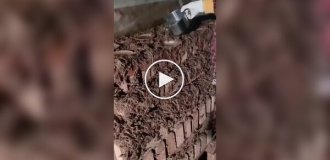Mexican cochineal: a small insect that has become very valuable (10 photos)
People have lived side by side with insects for so long that they have learned take advantage of. Cochineal, for example, a person collects and breeds already many years to obtain a persistent and bright dye - carmine. 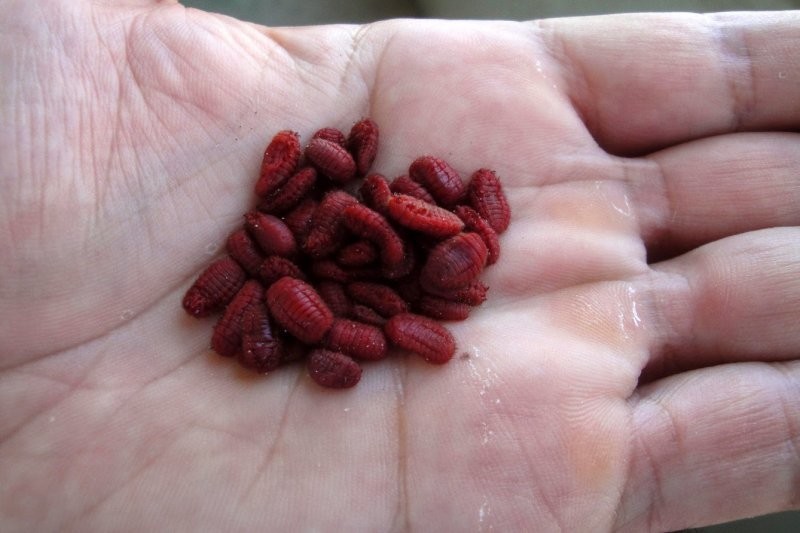
For several centuries the soldiers of the British army enemies teased "boiled crayfish" - for the bright red color forms. But it would be much more fair to call them "grated bugs." The fact is that the famous scarlet uniforms were dyed with cochineal - paint obtained from a small insect. 
If their uniforms are made of beetles, it's scary to think what their hats are made of...
The most famous beetle, which provided mankind with a beautiful dye - carmine, was the Mexican cochineal. This baby was highly valued by the Aztecs: their leader Montezuma demanded an annual tribute to yourself from decorated bedspreads, pieces of cloth and 40 bags of cochineal. Conquistadors who arrived in Mexico appreciated, among other things, this attraction: paint from a local beetle was much more beautiful than the one that was mined in Europe. Dried cochineal coming soon not only became a hot commodity, but also turned out to be in demand comparable to silver. 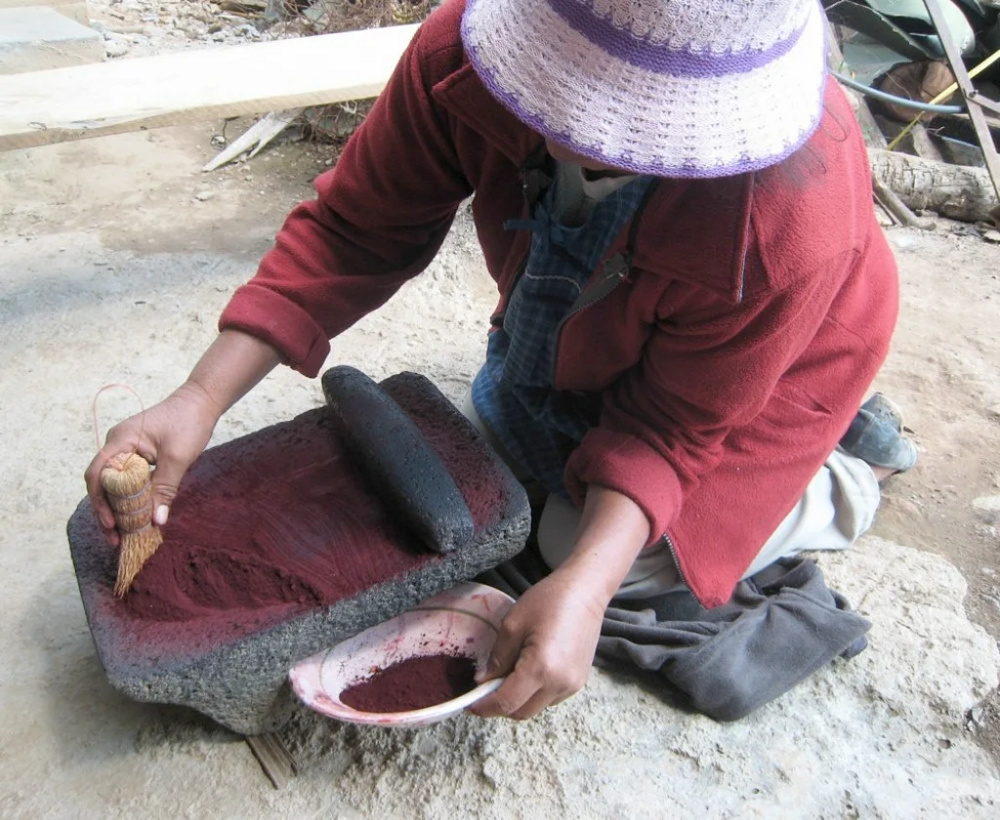
For a couple of hundred years, the Spaniards hid the origin of the wonderful paints. At first, the Europeans did not even know whether it was a mineral, a plant or something else
How did it happen that a small parasitic beetle turned into to such a value? Very simple: female cochineal decided adhere to the dogma "a woman's place is in the kitchen." At it was interpreted too literally. They suck on their proboscis to the plant - and now them from it do not tear off. So they while away their life, not looking up from their favorite plate. 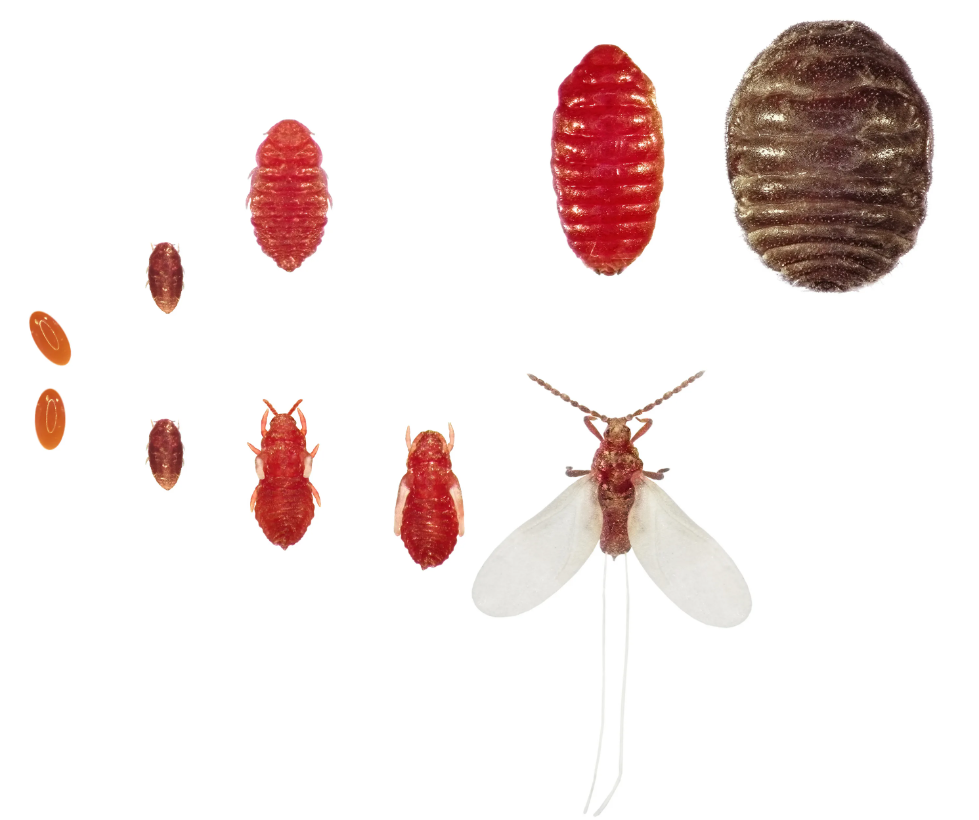
Unlike females, males have wings and are free to move from plant to plant. True, they are only interested in females. Adult males are unable to feed
And so as not to disturb them, the bugs are covered with a protective substance of a grayish-white color: a kind of frozen lump of cement. Therefore, at the sight of a feasting cochineal, few will come to mind that in front of him is the mother of a scarlet uniform, or even co-author of a painting by Rembrandt. 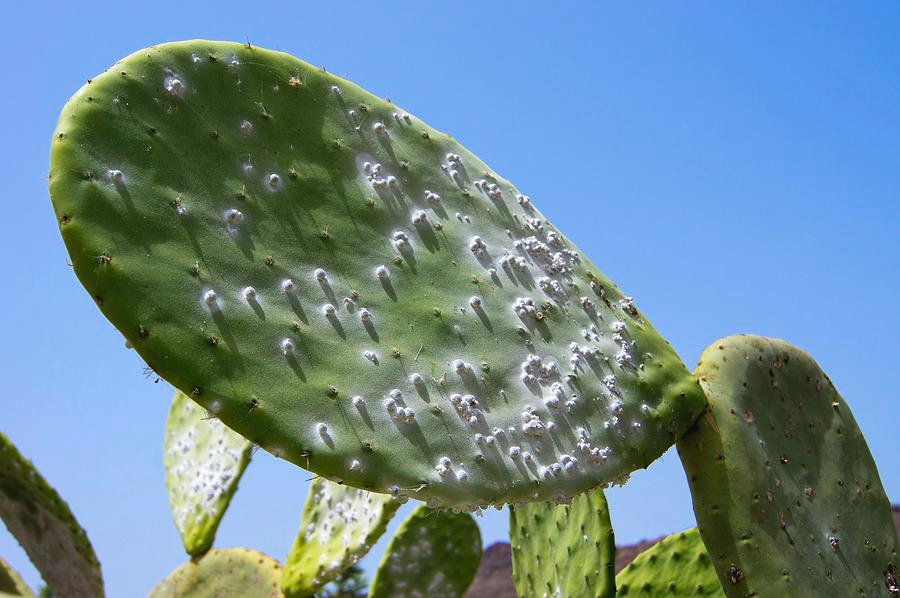
Females are also able to move from plant to plant. IN In their larval form, they secrete thin threads that look like cobwebs. Wind takes them to another cactus, where the insects will spend the rest of their lives
Cochineal is loyal not only to the chosen leaf, but also to the very kind of plants that it feeds on: give it exclusively prickly pear cactus. She gets her elegant color precisely because of the flowers of this plant. Once upon a time, the persistence of cochineal in its gastronomic flavors almost turned into an environmental disaster for Australia. 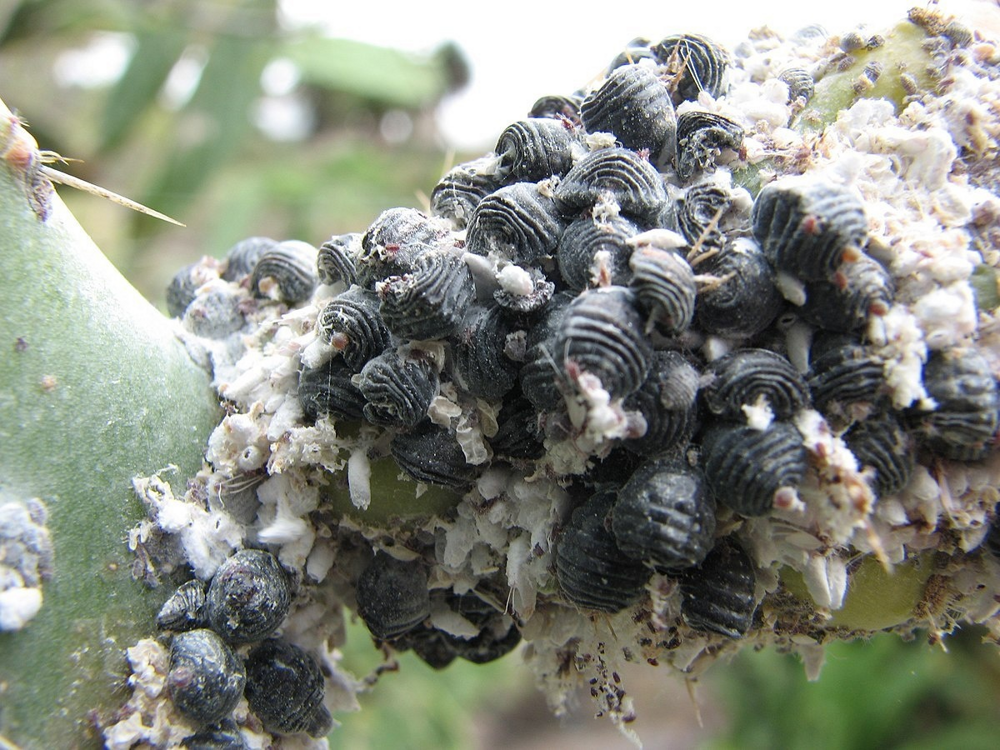
They cried, they pricked, but they ate the cactus
In the 19th century, a certain enterprising figure started produce carmine there. He studied the diet of fastidious insects and resolved to feed them in a worthy manner. Opuntia to the country the kangaroo was delivered on several ships. cactus was delighted with the new place of residence and has grown so that Australia has lost a fair amount of pasture in a couple of decades and agricultural lands. And the most offensive is that the production of carmine was not established there. 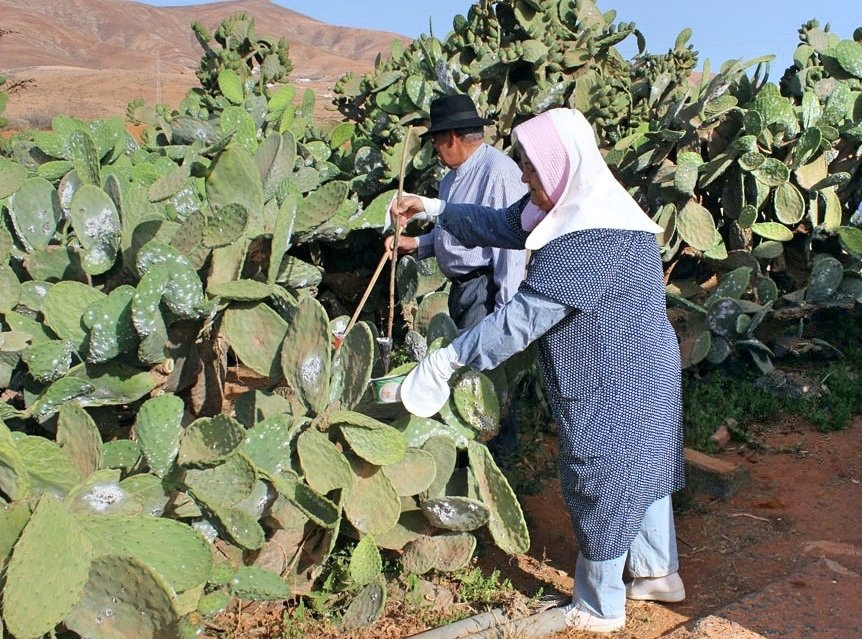
Each country has its own summer jobs. We plant potatoes, in South America we clean cacti with a brush!
Other regions were more fortunate. Mexico lost its monopoly on carmine after the civil war of the 19th century, and other countries briskly took up the beetles. Peru is currently the leader in cochineal production. 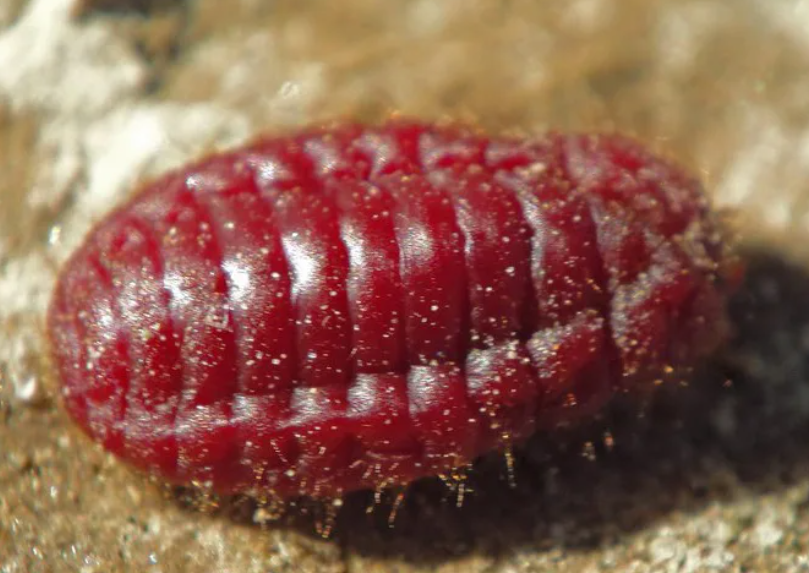
Cochineal harvesting methods are as unchanging as her eating habits. The beetle is simply brushed off the cactus with stiff brushes. By the time of collection, the carminic acid, which gives this amazing rich color, makes up about 90% of the individual's weight. 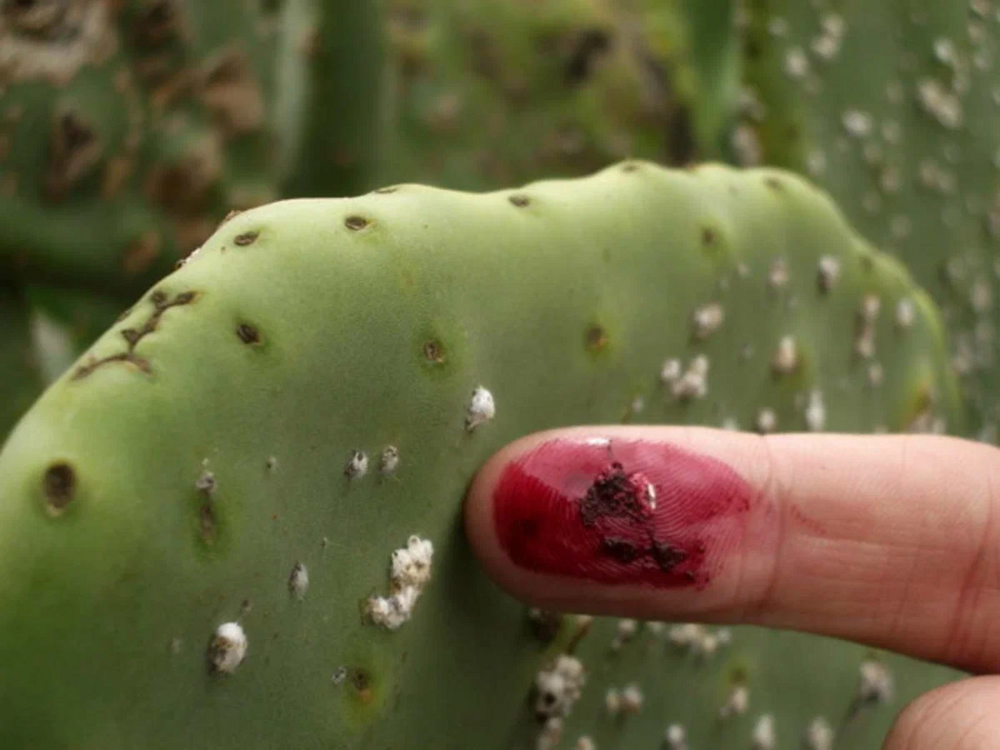
And then the beetles lose their lives: they are killed, dried and ground into powder. Everything to make us happy with beautiful fabrics and cosmetics. Yes, we still use these bugs as dye! By the way, that is why some spaceteak is called vegan. This means that instead of carmine in the components of shadows or lipstick dyes of chemical, not bug origin. 
50 shades of insect
Now artificial dyes are coming to replace the beetle. But also cochineal stays on. So the next time you admire the rich colors of paintings or apply classic red lipstick - do not forget to mentally say thanks to the little insect who heroically sacrificed his life to bring you joy.
